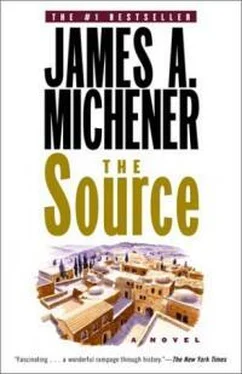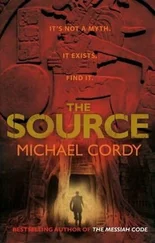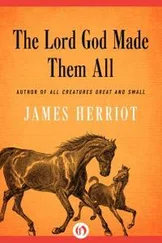In the stillness of the olive grove, where the original patriarch Zadok had once talked with God direct, Rabbi Asher listened to the voices of Naaman and Akiba as they were remembered in the Galilee.
“Rab Naaman of Makor said: Build a fence around the Torah, that it may be protected from thoughtless infraction.”
“Rabbi Akiba said: That simple man who gives delight to his fellow creatures gives delight also to God.”
“Rab Naaman of Makor said: To live within the law of Moses is to live within the arms of God.”
“Rabbi Akiba said: They came to me crying that since the Romans have destroyed the land, Israel is poor, but I said that poverty is as becoming to Israel as a red harness on the neck of a white horse.”
“Rab Naaman of Makor said: I complained, ‘There are two men and only one gives to the poor.’ God said, ‘You are wrong. There is only one man, because he who will not give to the poor is an animal.’”
“Rabbi Akiba said: Jews are born to hope, and in desolation they must hope even more strongly. For it is written that the temple shall be destroyed and then rebuilt. How could we possibly rebuild it unless the Romans had first destroyed Jerusalem?”
“Rab Naaman of Makor said: Like a twisted olive tree in its five-hundredth year, giving then its finest fruit, is man. How can he give forth wisdom until he has been crushed and turned in the hand of God?”
“Rabbi Akiba said: Israel must not be like the pagans, thanking their wooden gods when good happens and cursing them when evil comes. When good comes, the Jews thank God, and when evil comes, they thank Him too.”
“Rab Naaman of Makor said: There is the law, and before that there is the law.”
“But Rabbi Akiba said: He who glories merely in his knowledge of the law is like the carcass of a dead animal lying in the road. To be sure, the rotting beast attracts the attention of all, but whoever passes by holds his hand to his nose, for it stinks.”
For some time Rabbi Asher recalled the homilies of the dead sages, and in the afternoon he rose inspired and returned to town happily like a bridegroom, for he concluded that he understood God’s wishes: in the vision Queen Helena had been shown building a Christian church, and obviously God approved, for she had appeared in radiant light. To Rabbi Asher this meant that he, too, must erect a holy building, and he marched to the area south of that which Queen Helena had staked out for her Christians, and there he indicated where a small synagogue should be built. He then assembled his Jews and said, “For years we’ve been worshiping in my house, and it is no longer proper for us to do so. We shall build a synagogue like those in Kefar Nahum and Biri.” His suggestion met with approval until one cautious man asked, “And how shall we pay for it?”
Here Rabbi Asher was perplexed, for the Jews of Makor were an impoverished lot. Of the thousand people then living in the area—the smallest population it had known for centuries—more than eight hundred were Jews, but they controlled none of the major industries. “How shall we pay for it?” the man asked again, and there was silence.
Then, from the rear, a big hulking man rose to his feet, the stonecutter Yohanan, and he said through his jutting teeth, “Rabbi’s right. We ought to have a synagogue. You feed me and my wife, I’ll build one better than Kefar Nahum’s.”
The Jews were aware that only a few hours before this big man with beetling eyebrows and hairy hands had defied the rabbi, and they expected God’s Man to reject his offer, but to their surprise Rabbi Asher announced, “From Ptolemais to Tverya, Yohanan is the best stonecutter, and I will give his family their groats.” In a few moments he extracted other promises which would permit the synagogue to be started, and thus began that curious but fruitful partnership between the groats maker and the stonecutter which was to make Makor beautiful again.
Prior to this the synagogues of Galilee had usually been drab affairs in the Jewish tradition of a bleak exterior and a warm interior, but now the hulking, almost brutal, stonecutter displayed a knack for carving the white limestone his donkeys hauled in from the quarries, and before long the walls of the synagogue began to show stone birds and turtles and fish, so that during the second year of his work the Jews of Makor saw that Yohanan, using the poetry of stone, was building a masterpiece. It seemed that the uglier his outward life became, the more delicately he used his chisel, so that if he had not yet found a way to live within Judaism he at least knew how to create a home in which Judaism could prosper.
For his outward life remained ugly. After the synagogue was well begun Tirza gave birth to a son, which disturbed her, for she had to face the fact that since the boy was a bastard, he could never be a proper Jew; and she began to imagine that the women of Makor condemned her as she passed. One day she ran screaming to her husband, “Rabbi Asher follows me with accusing eyes wherever I go!” She became obsessed with the idea that he was damning her for having broken the law and began to whine complainingly to her common-law husband, “Yohanan, take me to Egypt or Antioch.” When he asked what good that would do, she could give no coherent explanation but offered the irrational suggestion that there they might find her first husband. The stonecutter tried to reason with her, but nothing he said consoled her, so in perplexity he went to the rabbi and said stupidly, “Tell me what to do.”
The anguish of Yohanan’s plea impelled God’s Man to take over and he said, “I’m sure that God holds Tirza to be your wife, even though illegally. I, too, must accept responsibility for her, and if she thinks that I have personally offended her, I must assure her otherwise.” And the little man left his study to apologize to Tirza; but when he reached her house she was gone. Rabbi Asher trailed her to Ptolemais, but she had already taken ship for Alexandria, and when he sent an appeal to the rabbis of that city they replied that she had wandered off to Spain.
Now Rabbi Asher proved himself a true Man of God, for he summoned Yohanan and said, “Even though your bastard son can never be a complete Jew, let us at least do for him what we can,” and he arranged for the boy’s circumcision, during which the awkward stonecutter stood holding his son as if the child were an apparition from another world. “Let his name be Menahem the Comforter,” Rabbi Asher said as he completed the covenant between the infant and God, and when it became apparent that Yohanan would never learn to care for the boy, Rabbi Asher arranged for different women of the town to look after the child so that Menahem, a handsome, square-jawed creature with large black eyes and bright intelligence, might grow as other boys did.
His father, chin drooping on his chest as if he were a confused animal, lounged about the town after his work was done, talking roughly out of the side of his mouth and serving as a focal point for the irresponsible younger men of Makor. “This town is nothing,” he grumbled. “If you want to see the world travel inland from Antioch. Edessa! They have wine in Edessa I can still taste. Persia! I was a fool ever to leave Persia. Girls from sixteen nations gather there and they love a man who earns a little money.” He was a bad influence but was allowed to remain because he showed such skill with the chisel.
One evening when Rabbi Asher came to inspect the day’s work he had the sensation that his synagogue was growing from the earth like a stone flower, and he was content that in building this lovely place he was accomplishing God’s wish as delivered in the vision. Then he saw Yohanan working alone among the rocks, chipping casually at a chunk of raw limestone, and as Rabbi Asher watched how skillfully the stonecutter brought beautiful design out of the chaos of the rock he said, “Can you understand now, Yohanan, how the hammer and chisel of the law bring form to the chaos of life?” The big man looked up and for a brief moment seemed to catch a glimmer of what the rabbi was attempting to explain, but the spark died. At that spot, during a period of ten thousand years, ninety-nine per cent of all sparks struck by either flint or mind had flamed momentarily and died; but now Rabbi Asher saw what his stonecutter was making: a linked series of plain crosses whose ends extended at right angles, forming a kind of heavy, squarish wheel, and as soon as the rabbi saw this motif he visualized its effectiveness as a frieze for the inner walls of the synagogue, for the inherent movement of the wheel teased the eye forward from one point to the next.
Читать дальше








![Джеймс Купер - Пионеры, или У истоков Саскуиханны [The Pioneers, or The sources of the Susquehannah]](/books/395797/dzhejms-kuper-pionery-ili-u-istokov-saskuihanny-t-thumb.webp)

